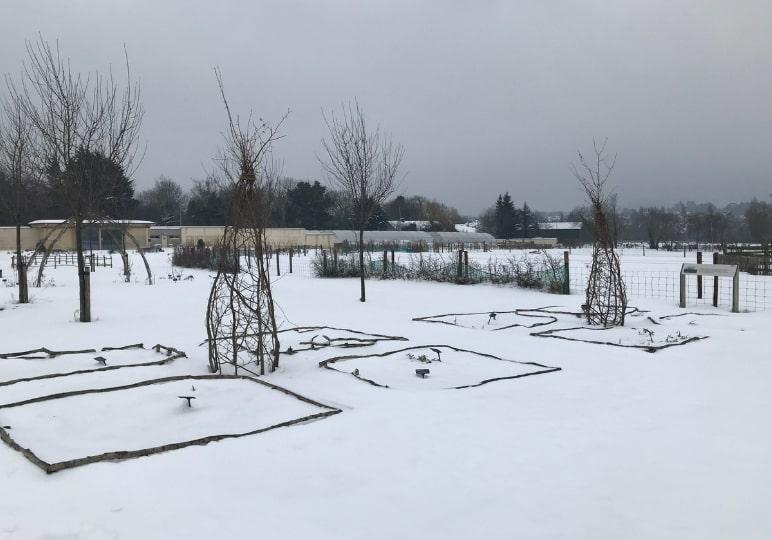Home » What does all this snow mean for your garden?

What does all this snow mean for your garden?
-

As the beast from the east starts to retreat, what will this unseasonable spell of cold weather mean for our garden and what can we do now to minimize the impact of the heavy snow? You may be glad to read that my first bit of advice is to do very little. For the most
part the large accumulations of snow canin fact act as an insulator from the worst of the cold temperatures.
In Airfield we only removed snow from ourpollytunnels and conifer trees to reduce the risk of the heavy snow ripping the plastic or breaking branches. Thankfully our tunnels came through unscathed and only a few branches fell victim to the heavy accumulations. Elsewhere we will let the snow melt naturally as this willensue the resultingmelt water is spread evenly over all the garden rather than being focused on one area where a pile of snow was made.In general 10mm of snow equates to about 1mm of water so although the snow falls have been severe it is some consolation to know that the amount of melt water will be only one tenth of the actual snow fall. In fact our garden was getting rather dry so to a certain extent the melt will be welcomed.
Another side effect of the large accumulations of snow is that some evergreen trees may have come under stress from the weight of the snow on their branches. As the snow begins to melt take time to access the branch network of your conifer trees looking for branches that may have fractured or broke under the weight of the snow. It may be necessary to prune out damaged branches or tidy up broken limbs by making a clean cut using a sharp saw.
If you have used salt or grit on your driveway or paved areas of your property be sure to avoid pilling the snow spoils onto areas of lawn or flower borders. This snow will have absorbed the salt which will in turn be released into the soil when it melts. Salt is never a good addition to your soil so where possible be sure to mound up snow from hard surfaces in an area where it can melt into a drain.
Although this cold snap was severe it never reached the low temperatures and wasn’t as prolonged as the big freeze of 2010. In Airfield lowest temperatures plunged to around -4°C which thankfully will not be enough to cause any lasting damage to the majority of our outdoor plants. Our highest risk plants were in fact recent seedlings of tender annuals. As they were all tucked up in the warm propagators they have come through unscathed thankfully. But if you did lose some of your tender annuals rest assured that there is still time to make a second sowing.
Where possible avoid walking over your snow covered lawn and flower borders. Regardless of how well you think you know your garden it is very hard to know where the paths start and stop when they are covered under a foot of snow. Walking on frozen grass can cause the blades of grass to break as well as causing compaction to the soil.
Finally, if you are anxious to access the damage the cold spell may have caused to some of your favourite plants I would recommend you should resist the urge to go digging. The forecasted thaw will gradually melt the snow and reveal your garden in a much more effective manner
then you and a snow shovel ever could. Pay heed to nature’s signals and embrace the extra few days of hibernation. Nature has provided us with a rare opportunity in spring to complete some extra planning or seed ordering. So embrace the couch while you can, our second spring of the season won’t be long in coming.Colm
